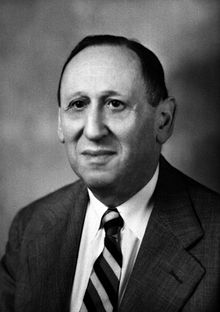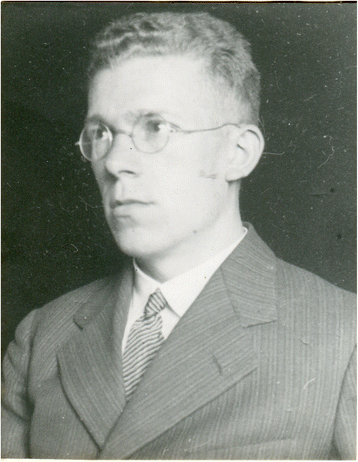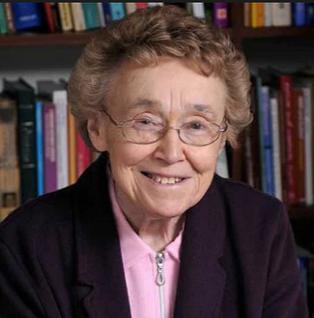Asperger’s syndrome – its history and future
Autism and Asperger’s syndrome are relatively new diagnoses that came into the light during the mid-1900s. Individuals with these neuropsychiatric disorders had previously been considered “intellectual idiots” and “slow of mind”. 1 This despite the fact that autism not necessarily is co-morbid with intellectual disability.
The first person to use the term “autism” was the Swiss psychiatrist Eugen Bleuler. In 1910 he described individuals who were enclosed in their own minds and showed an abnormal interest for fantasies – the word autism was at that point meant to describe people with schizophrenia and has nothing to do with the meaning of the term today. 2
In this article, we take a look at the most important autism researchers so far, and delve into why Asperger’s syndrome is such a controversial diagnosis.
Table of Contents
Pioneers of the autism spectrum disorder
Leo Kanner (1894-1981)
Although autism itself hardly is a new disorder, there is very little information to be found in early literature. A handful of descriptions regarding autism surface sporadically, for example in notes made by Johannes Mathesius, the notary of Martin Luther, but it wasn’t until much later that writings dedicated to autism started to show up in the scientific literature.
The Austrian psychiatrist Leo Kanner was the first person to publish a detailed description of the autism spectrum. He migrated to the United States and started working as a child psychiatrist in Maryland, where he came into contact with a number of children who showed typical signs of autism. In an article published in 1943 – “Autistic Disturbances of Affective Contact” – he showcases symptoms that later would be used as basis for various diagnostic criteria for autism spectrum disorders. 3

Among the children that Kanner describes in his article, there are signs such as rigid routines and repetitive behavior, as well as abnormal language development, and a disinterest in what’s going on around them. Because the term autism already had been created by Bleuler and corresponded well with this “new” syndrome, Kanner decided to use the word when describing the children.
In his article, Kanner mentions that the parents of these autistic children often were highly educated and intellectually gifted, and it wasn’t unusual for family members to be introverted or eccentric. This makes a lot of sense in the light of modern research, which hints at an underlying autistic phenotype where subtle autistic behavior often is seen in family members. 4
However, Leo Kanner made no distinction between low- and high-functioning autists, but diagnosed all of the children with “infantile autism”, which also was referred to as Kanner’s syndrome.
You can read Leo Kanner’s article on infantile autism at Rescuepost.com (pdf, 2 MB).
Hans Asperger (1906-1980)
Asperger’s syndrome is named after Hans Asperger, who was active around the same time as Leo Kanner, and who also was Austrian.
While working in Vienna, Asperger came across children who exhibited signs of lowered empathy, motor difficulties, deficits in social interaction, as well as had intense special interests. He referred to this as “autistic psychopathy” – a term originally coined by the comparatively unknown Ukrainian psychiatrist Grunya Sukhareva twenty years earlier – and was of the opinion that self-imposed isolation was the primary sign of the syndrome.
Throughout his life, Asperger’s articles remained relatively unknown to the world – one of the reasons was that Leo Kanner wrote his articles in English, and as such his work came to have much more of an impact in the scientific community. It’s mainly one article by Asperger that is quoted in psychiatry, and it was written in German in 1944; that is to say, a year after Kanner published his article on infantile autism.

In this written work, Asperger mentions highly intelligent children who showcase strong talent within one or a few subjects or abilities. He refers to these children as “tiny professors”, and is of the opinion that their autistic symptoms not necessarily are harmful, but on the contrary may be necessary for success within e.g. the arts and sciences. He states that detail orientation and special interests are strengths that can benefit society as a whole, but also points out that this “autistic psychopathy” comes with a lot of issues and often great difficulties for the autistic individual.
It can be said that Kanner’s description of infantile autism corresponds best with “classical autism”, i.e. autism where great difficulties with verbal communication is a must. Asperger’s description applies to the high-functioning type where there often is linguistic talent and where selective mutism occurs less frequently. However, the term “Asperger’s syndrome” wasn’t coined until 1963, in the book “Infantile Autism” by the German physician Gerhard Bosch. 5
The modern view on Asperger’s syndrome
Lorna Wing (1928-2014)
When Lorna Wing first started her career she worked as a psychiatrist for adults, but she switched to working in child psychiatry after he daughter Susie was born. Wing quickly realized that Susie wasn’t like the other children – she never reached out to her mother and seemed to be self-absorbed – and at age three she was diagnosed with infantile autism. Acquiring better understanding and the ability to help her daughter was the primary reason Wing decided to switch career paths, and thanks to her decision we’ve been rewarded with a clearer view on autism spectrum disorder.
During the early days of her research into autism, the disorder was thought of as very rare – 5 affected individuals per 10.000 people, or 0.05% of the population. Together with her colleague Judith Gould she created the Camberwell Case Register, where data related to patients visiting outpatient psychiatry clinics in London was stored. 6

While looking through the register, Wing realized that autism isn’t a single diagnosis, but rather appears to be a spectrum with symptoms of varying intensity. Thus she coined the expression autism spectrum disorder as an umbrella term for all of these disorders. She also realized that many people on the autistic spectrum had fallen under the radar, and rather than 0.05% of the population, it appeared as though around 1% exhibited some kind of autism spectrum disorder.
Wing has made a huge effort to help autists, and among other things she was one of the founders of the National Autistic Society – an organization that provides autists and their families with support and information – and she also created the diagnostic interview tool DISCO 7, which still is used when diagnosing autistic spectrum disorders. She was also the one who brought Hans Asperger’s research to public attention, and consequently popularized the term Asperger’s syndrome when describing a certain form of high-functioning autism.
The uncertain future of Asperger’s syndrome
During 2013, the DSM-5 – the latest edition of the American diagnostic manual for psychiatric disorders – was published. One of the biggest differences between DSM-5 and it’s predecessor was that the diagnosis of Asperger’s syndrome was removed; instead it was lumped together with other autistic disorders under the umbrella term autism spectrum disorders.
Is Asperger’s syndrome the same as high-functioning autism?
The debate regarding whether or not Asperger’s syndrome is a diagnosis in itself, or if it simply is a milder variant of autism, has been long and passionate. Several scientific studies have tried to pinpoint differences and similarities in Asperger’s syndrome and autism, but results have thus far proved inconclusive. 8
It appears as though the two disorders tend to overlap and that the differences are quantitative rather than qualitative – people with high-functioning autism often face more issues than those diagnosed with Asperger’s syndrome, but the issues seem to be of a similar nature.
No absolute diagnostic criteria
Another problem that has plagued Asperger’s syndrome since its early days is the vast amount of diagnostic criteria. Because the line between high-functioning autism and Asperger’s syndrome is so undefined and fuzzy, the various diagnostic manuals as well as autism spectrum disorder researchers all have created their own unique diagnostic criteria.
These criteria are so different from one another that the only symptom they have in common is disrupted social functioning – requirements like uniform interests, motor difficulties, and repetitive behavior vary from manual to manual.
It was a combination of the lack of biological differences between high-functioning autism and Asperger’s syndrome, and the inability to agree on diagnostic criteria, that led to the erasure of Asperger’s syndrome from the DSM-5.
However, parts of Europe use the ICD-10 when diagnosing autism spectrum disorders, where Asperger’s syndrome still exists as its own diagnosis – despite this, it’s not unusual for people to get diagnosed with autism even when their symptoms correspond better with Asperger’s syndrome.
